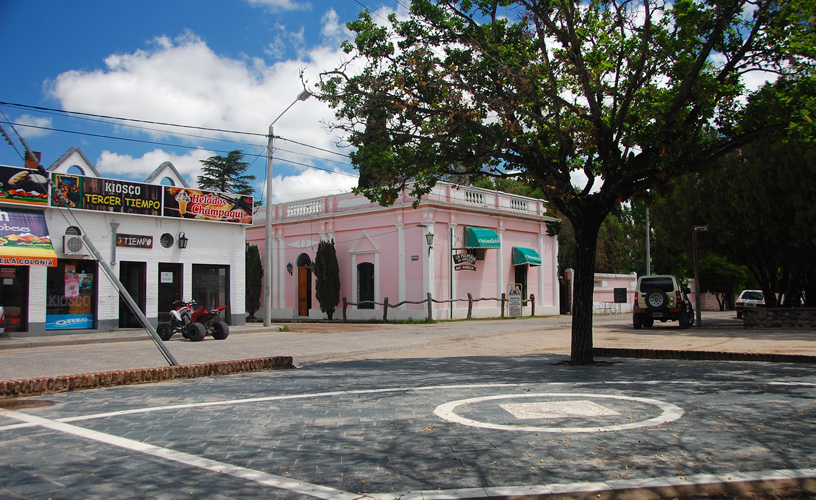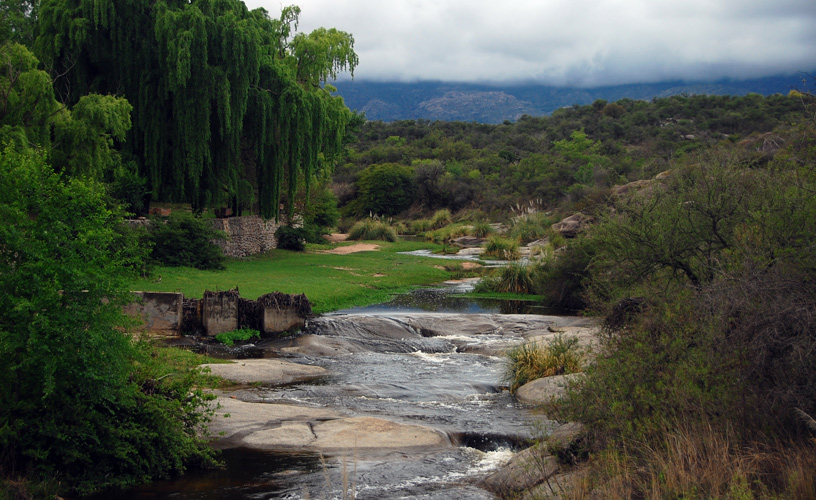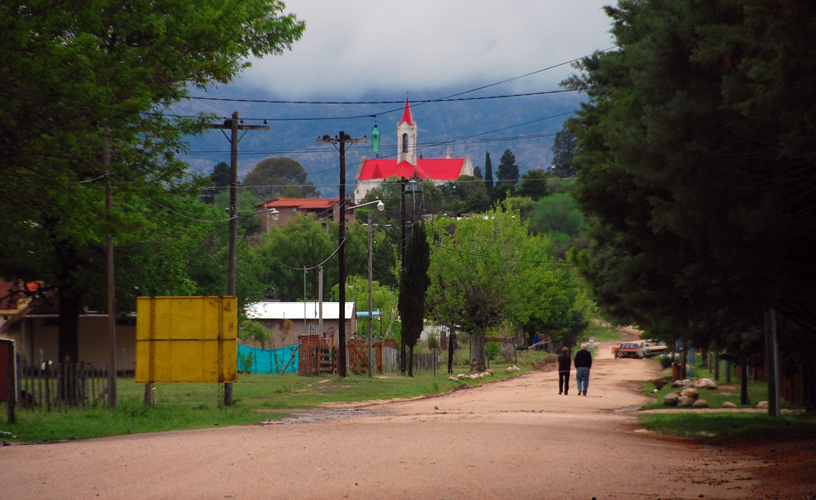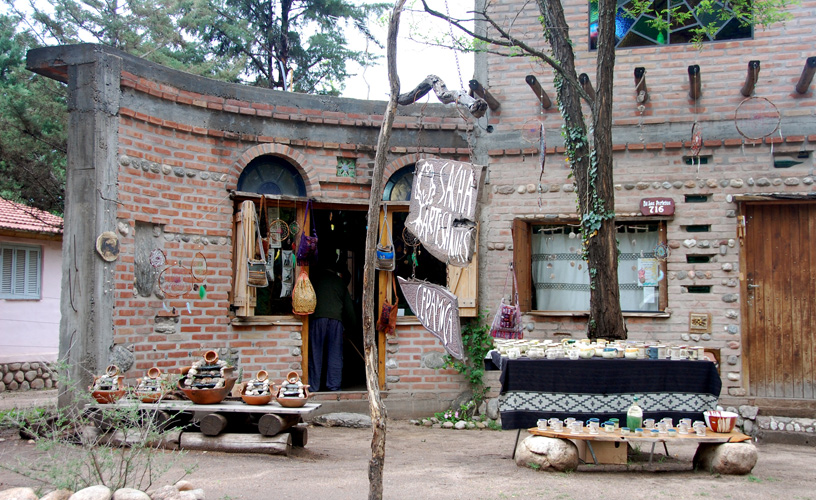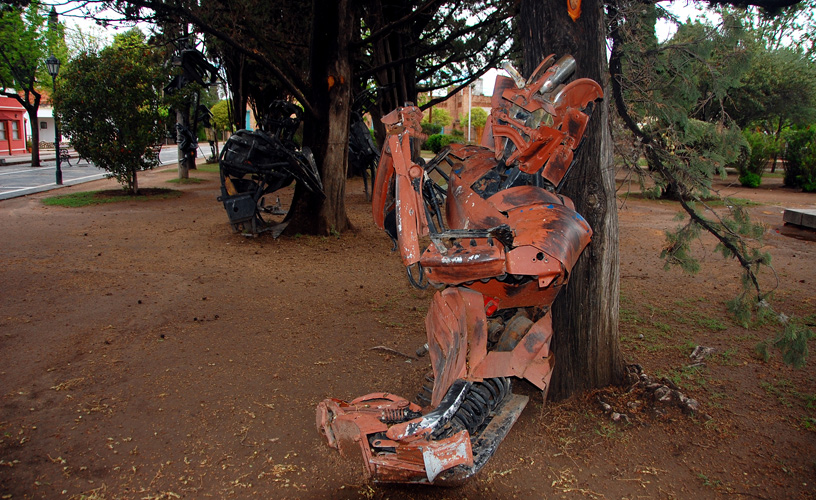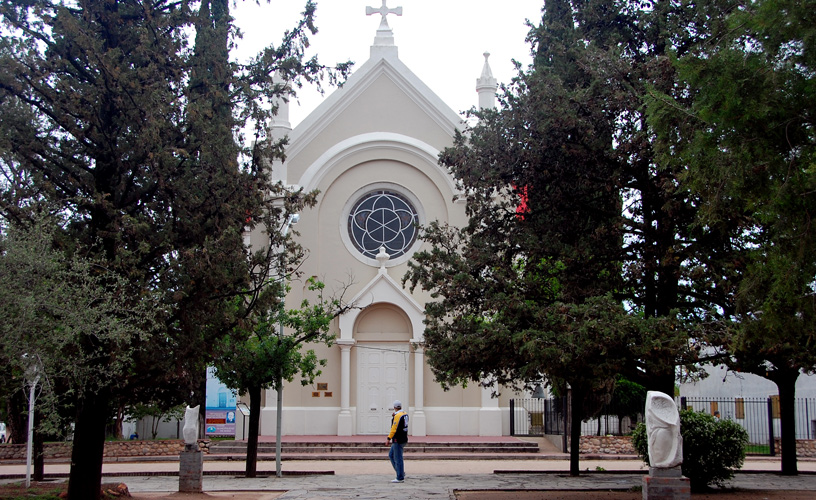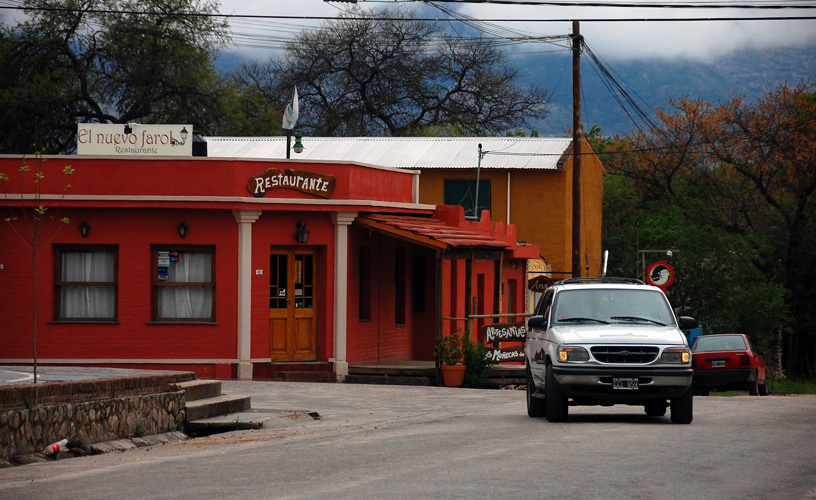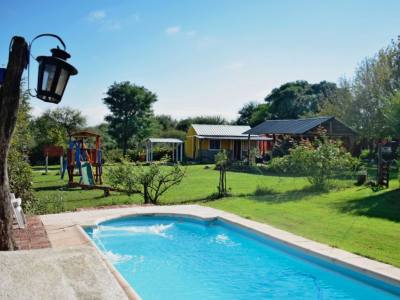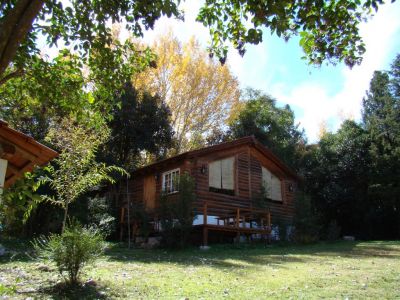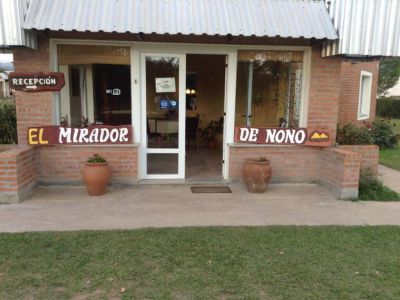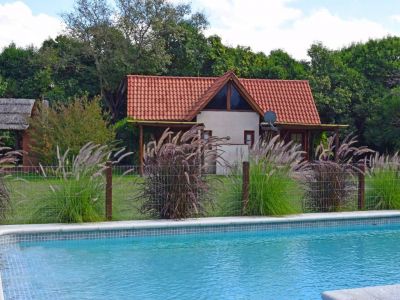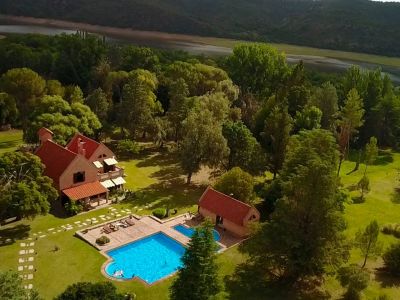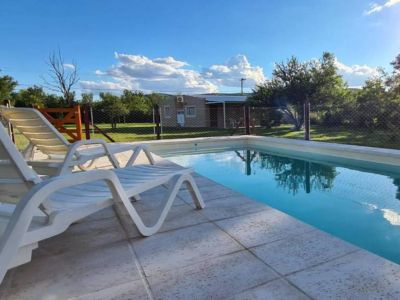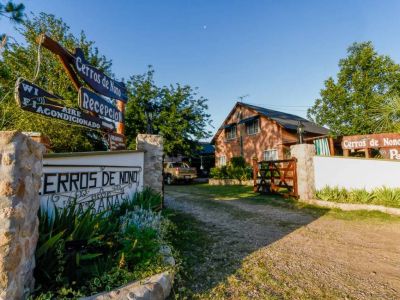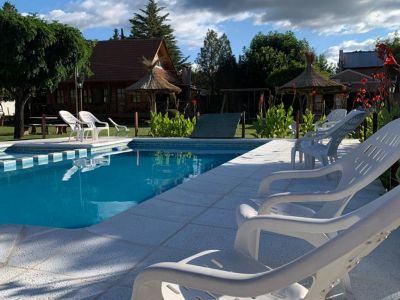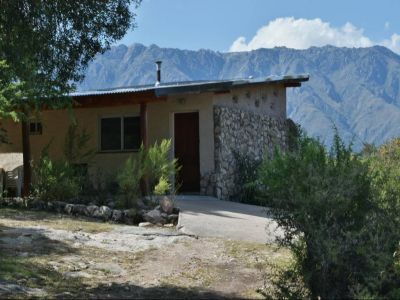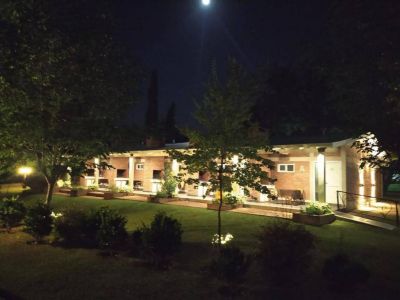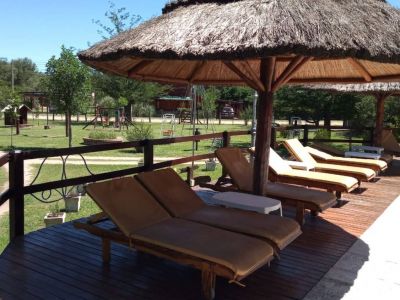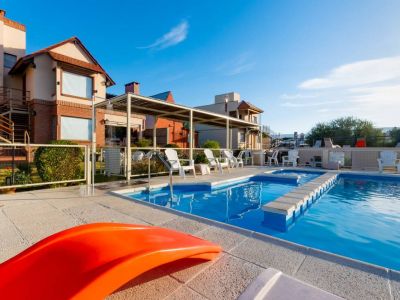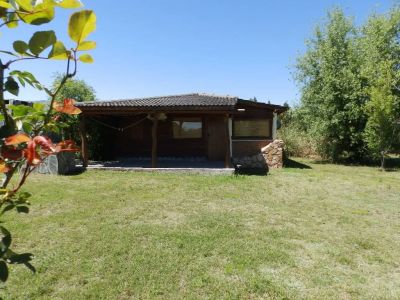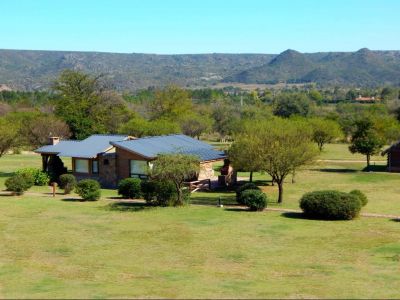As we reached Nono, a quiet district in Traslasierra Valley, the heat was so intense that we headed for the beach. The old grand houses of Nono and its dirt streets guided us to the shores of río de los Sauces (River of the Willows). We looked for a shady spot under the leafy trees and felt delighted to be refreshed. We had the best view of that wide river that seemed to be running across a plain. A soft breeze blew through the willows and we started to feel cooler. It was then when we remembered our tour to enter the town. In the very center and around the main square, the buildings feature how old Nono really is. Many old grand houses still stand, some of them with vestiges of the passing of time. Others are very well maintained and still inhabited.
Quiet Streets and Sandy River at Nono
The non-ornamented square is an outdoor art exhibition venue. “Ever since the national plastic artist encounters have taken place, this place has boasted various metallic sculptures made with useless pieces and others made with wood and stone. Imagination and art have been combined in order to decorate the heart of Nono”, was the information we received.
Sarmiento Street is the main in town and, along with Vicente Castro Street, it is the only one that has been paved. The rest of the streets give a dusty atmosphere to the village and welcome the helpful water from the spray truck, a sample of the local lifestyle. Beautiful ancient street laps still remain at some corners on the houses walls.
Saint John Baptist’s chapel church and its parish in honor of Saint Joseph stand out at the square. As it was to be expected, the presence and mark of priest Brochero becomes present through some brass plates and the words of parishioners all around the area. The Cobbled Path is a famous road the rural priest used to take to reach Los Algarrobos Church.
Mónica Pons
Eduardo Epifanio
